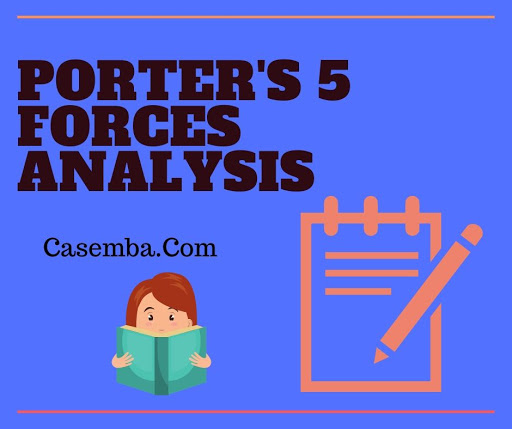Porter's 5 Forces of Activity-Based Costing And Capacity Case Study Analysis
This is not the actual case solution. To get the case solution place your order on the site and contact website support.
Home >> Robert S Kaplan >> Activity-Based Costing And Capacity >> Porters Analysis
Porter's Five Forces of Activity-Based Costing And Capacity Case Help
The porter 5 forces model would help in getting insights into the Porter's 5 Forces of Activity-Based Costing And Capacity Case Help market and determine the probability of the success of the alternatives, which has been thought about by the management of the business for the function of handling the emerging problems connected to the minimizing subscription rate of customers.
1. Intensity of rivalry
 It is to alert that the Porter's Five Forces of Activity-Based Costing And Capacity Case Solution belongs of the multinational show business in the United States. The company has been taken part in supplying the services in more than ninety countries with the video as needed, items of streaming media and media provider.
It is to alert that the Porter's Five Forces of Activity-Based Costing And Capacity Case Solution belongs of the multinational show business in the United States. The company has been taken part in supplying the services in more than ninety countries with the video as needed, items of streaming media and media provider.
The industry where the Porter's 5 Forces of Activity-Based Costing And Capacity Case Analysis has actually been operating since its inception has numerous market players with the substantial market share and increased earnings. There is an intense level of competition or competition in the media and home entertainment market, engaging organizations to strive in order to retain the present consumers through offering services at budget friendly or affordable costs.
Shortly, the strength of competition is strong in the market and it is very important for the company to come up with unique and innovative offerings as the audience or clients are more sophisticated in such modern-day technology era.
2. Threats of new entrants
There is a high cost of entrance in the media and entrainment industry. The entertainment industry needs a big capital amount as the companies which are taken part in providing home entertainment service have larger start-up cost, that includes:
Legal cost.
Marketing expense.
Distribution cost.
Licensing cost.
In contrast, the existing entertainment company has been thoroughly dealing with their targeted sectors with the specific expertise, which is why the hazard of new entrants is low.
Another important element is the intensity of competitors within the essential market players in the market, due to which the brand-new entrant hesitate while entering into the market. The innovation and trends in the media market are evolving on consistent basis, which is adapted by market rivals and Porter's Five Forces of Activity-Based Costing And Capacity Case Help.
3. Threat of substitutes
The threat of substitutes in the market present moderate risk level in media and the home entertainment industry. The consumer may also engage in other leisure activities and source of information as compared to seeing media material and online streaming.
4. Bargaining power of buyer
The dynamics of media and home entertainment industry allows the consumers to have high bargaining power. The low expense of changing enables the customers to seek other media service companies and cancel their Porter's Five Forces of Activity-Based Costing And Capacity Case Solution subscription, thus increasing the company hazard.
5. Bargaining power of suppliers
Considering that Porter's 5 Forces of Activity-Based Costing And Capacity Case Analysis has been competing versus the traditional distributor of home entertainment and media, it requires to reveal greater flexibility in contract as compared to the traditional companies. The products is innovation based, the dependence of the companies are increasing on continuous basis.
Goals and Objectives of the Business:
In Illinois, United States of America, among the greatest producer of sensor and competitive organization is Case Option. The company is associated with manufacturing of broad product variety and advancement of activities, networks and procedures for achieving success amongst the competitive environment of market offering it a considerable advantage over competitiveness. The company's objectives is primarily to be the manufacturer of sensing unit with high quality and extremely tailored organization surrounded by the premium market of sensing unit manufacturing in the United States of America.
The objective of the organization is to bring decrease in the product costs by increasing the sales system for each product. Secondly, the organizational management is associated with determination of possible products to provide their customer in both long term and short term implies. The organizational strength involves the establishment of competitive position within the production market of sensing unit in the United States of America on the basis of 5 pillars that includes client care, effectiveness in operation management, acknowledgment of brand, adjustable capabilities and technical innovation.
The company is a leading one and carrying out as a leader in the sensing unit market of the United States for their personalized services and systems of sensor. Innovation in ideas and item creating and provision of services to their clients are one of the competitive strengths of the organization. The organization has actually utilized cross-functional managers who are accountable for adjustment and understanding of the company's strategy for competitiveness whereas, the organization's weakness involves the decision making in regard to the items' removal or retention just on the basis of monetary elements. Therefore, the measurement of ROIC is not related to the trade incorporation and concerns of consumers.
